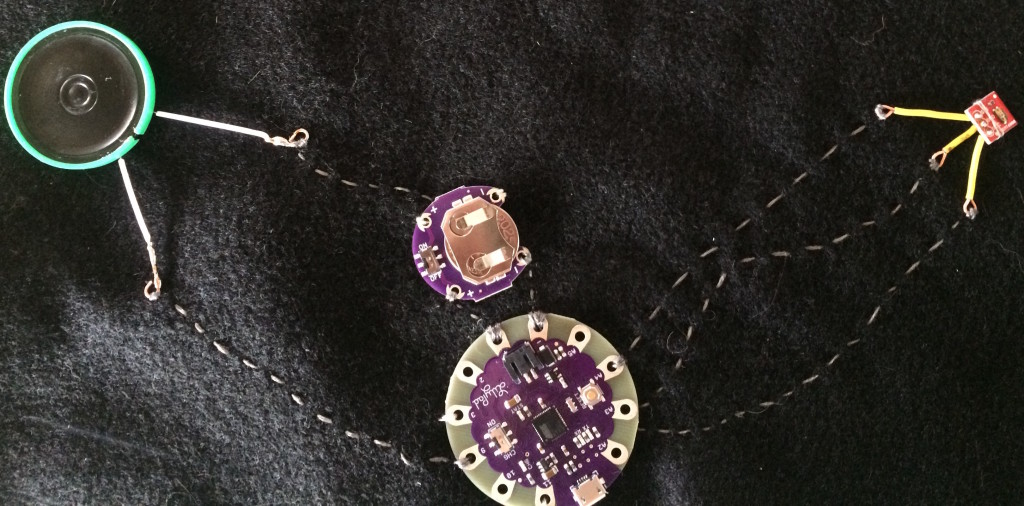The video above demonstrates my LilyPad light sensor theremin that is now working. Right now it is sewn on to a piece of black felt so that when I have the rest of the components functioning I can add them to the overall project.
In terms of those other components, I was hesitant to start plugging in my tiny motor to the SparkFun Pro Micro / accelerometer set up I have breadboarded. I did some research on it and I guess the rotational motor can cause spikes in voltage which can fry my board, so… I looked up a way to filter it and will have to use some sort of protective implementation like this: http://learningaboutelectronics.com/Articles/Vibration-motor-circuit.php
In terms of design aesthetics, I’d like to say my biggest inspiration is Minimalism… mostly because my ideas for the wearable aesthetic of this project are all over the place.
If I can eventually narrow the look and construction of these components to neatly fit into the minimalistic aesthetic it will be a major accomplishment.
I have decided that the less additional embellishments the project has, the better. The point of the project is to enhance the wearer’s everyday motion by adding sound, and that motion will not be natural if the article they are wearing is elaborate and unusual.
Simple lines and a design that is structurally significant but not distracting will hopefully enable the user to fully appreciate and enjoy their experience with the project.
In this way, I think the conceptual integrity of the Minimalism lies in the notion that a ‘work of art should not refer to anything other than itself’ x. I want the format of my piece to re-affirm my intentions for making the piece, if only in guaranteeing its accessibility and function.
In the way that Minimalism returns to the essentials of art, the very objective and visual fundamentals of any work, I would like my project to essentially work with the user in a way that doesn’t really make them do additional work. I want the aesthetic of the piece to mimic the natural inspiration of the project, the casual movement of humans captured and emphasized in a simple way.


2 Comments. Leave new
It is clear that the writer is a data geek. I like the way he writes and writes facts.
It’s always such a joy to read articles created by
real professionals, like https://americafirstactioncommittee.com/methodological-process-of-ethnographic-observation-sample-essay/. I
am fed up with that no-name, ghostwritten articles. That is why it was so nice to have a look at
a compelling piece. I see the writer has floor knowledge in the topic as
well as some practical experience. Such kind of information is more valuable
than copypasted blog posts ideas.
Your idea for a LilyPad light sensor theremin is great. I really like the idea of wearable tech and actually did something with a Lilypad as well where I used a photoresistor and an old hat to make an “automatic headlamp”.
The minimalist aesthetic definitely fits well with wearable tech and it sounds like you are doing quite a good job with it. The hardest part of my project was definitely the sewing, so it makes me curious if you have had any trouble maintaining a minimalist look while implementing your component connections?